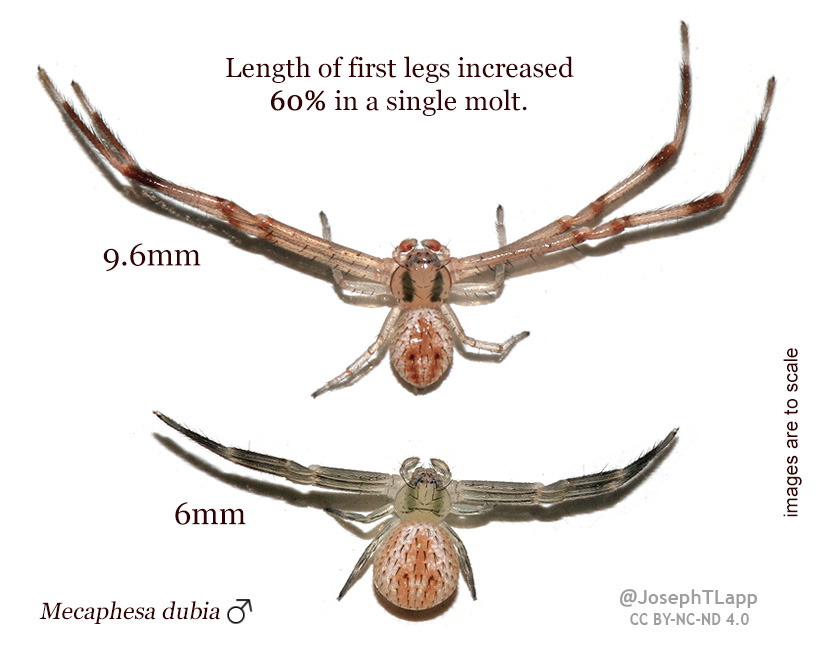Molting is a crucial stage in the life cycle of jumping spiders, during which they shed their old exoskeleton to make way for a new and larger one. As they grow and mature, jumping spiders undergo multiple molts. The duration of this process can vary depending on the type of spider, its age, and environmental factors. In this article, we will delve into the world of jumping spider molting, exploring its intricacies and providing insights into the time it takes for these fascinating creatures to complete this transformation.

How Long Does It Take A Jumping Spider To Molt
While the exact duration of the molting process varies among jumping spider species, it typically takes around two weeks. However, it is not uncommon for some species to take as little as a week or as long as a month to molt. The time it takes for a jumping spider to molt is not only influenced by its species but also its age. Younger spiders tend to molt more frequently and at shorter intervals compared to their adult counterparts.
What Happens During Molting?
Molting is a multifaceted process that entails several distinct stages. During pre-molt, the spider stops feeding and becomes less active. Its old exoskeleton begins to loosen and separate from the new exoskeleton forming beneath it. This new exoskeleton is soft and pliable, allowing the spider to expand its body and shed its old skin. The actual molting process is initiated by the spider releasing enzymes that dissolve the old exoskeleton at specific points. It then pushes its way out of the old exoskeleton, starting with the legs and gradually working its way up to the head.
Once the spider has emerged from its old exoskeleton, it is highly vulnerable as its new exoskeleton is still soft and hardening. During this post-molt stage, the spider remains motionless, allowing its new exoskeleton to harden. It also consumes the shed exoskeleton to replenish lost nutrients. The hardening process can take several hours, and the spider’s new exoskeleton will gradually darken and become more rigid.
Environmental Factors Affecting Molting
Environmental factors can also play a role in the duration of the molting process. Temperature is a critical factor, with higher temperatures generally leading to faster molting. This is because higher temperatures increase the spider’s metabolic rate, which in turn accelerates the physiological processes involved in molting. Humidity is another important environmental factor, as jumping spiders require a certain level of humidity to prevent dehydration during the molting process.
Tips for Observing Molting
If you are fortunate enough to witness a jumping spider molting, it is important to exercise caution and avoid disturbing the spider. Molting is a delicate and vulnerable process, and any interference can be detrimental to the spider. The best way to observe molting is from a distance, using a magnifying glass or camera with a macro lens. It is also advisable to keep the environment calm and quiet to minimize stress for the spider.
While molting can be an awe-inspiring sight, it is essential to remember that jumping spiders are generally harmless to humans. They play a beneficial role in their ecosystem by consuming insects that can be considered pests. By understanding the molting process and its significance, we can appreciate the intricate life cycle of these fascinating creatures and contribute to their well-being.
Frequently Asked Questions (FAQs)
- What is the purpose of molting?
Molting allows jumping spiders to grow and shed their old, restrictive exoskeleton to make way for a new and larger one. - How often do jumping spiders molt?
The frequency of molting varies depending on the species and age of the spider, but younger spiders generally molt more frequently than adults. - What happens if a jumping spider’s molt is interrupted?
Interrupting a spider’s molt can be detrimental, as the spider’s new exoskeleton is soft and vulnerable during this process. - Can jumping spiders molt underwater?
Jumping spiders cannot molt underwater as they require a certain level of humidity to prevent dehydration. - What is the difference between a soft molt and a hard molt?
Soft molts occur in early instars when the exoskeleton is less rigid, while hard molts occur in later instars when the exoskeleton is more mature and hardened.
Conclusion
In conclusion, the duration of the molting process in jumping spiders can vary based on factors such as species, age, and environmental conditions. By understanding the intricacies of molting and its significance, we gain a deeper appreciation for the life cycle and resilience of these fascinating creatures. Molting is a testament to the remarkable adaptability and survival strategies that have allowed jumping spiders to thrive in diverse ecosystems. I hope this article has shed light on the fascinating world of jumping spiders and their molting journey.
How Long Does It Take A Jumping Spider To Molt

Image: wolfspider123.blogspot.com










